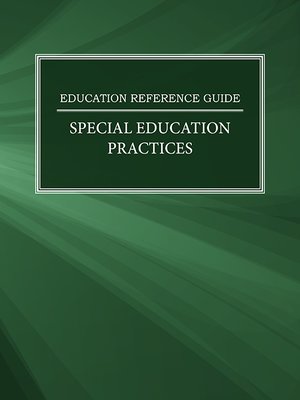
Sign up to save your library
With an OverDrive account, you can save your favorite libraries for at-a-glance information about availability. Find out more about OverDrive accounts.
Find this title in Libby, the library reading app by OverDrive.



Search for a digital library with this title
Title found at these libraries:
| Library Name | Distance |
|---|---|
| Loading... |
The volume begins with Kerri Phillips’ overview of exceptional learners, their educational options, the various service
delivery models available to them, and their parents’ and educators’ role in fostering their growth. Assessment procedures
for exceptional learners can be rather difficult to administer, and as Philips stresses, the “best practice dictates
that any and all decisions in educational programming should be based on information gained from multiple sources
and stakeholders.” If a child is suspected to have a learning disability, state and federal criteria dictate that he or she
undergo a multidisciplinary evaluation that considers the physical, intellectual, social, and functional development
of the child. Kirsty Brown then discusses the deficit model as a way to define “educational difficulties solely within
the child,” instead of their educational environment and possible accommodations that could be made to it. Once the
default approach for assessing students with disabilities, this model is becoming obsolete as educators recognize the
disproportionate labeling of minority children as special needs students. Karin Carter-Smith summarizes the Response
to Intervention measure, which is a new method used to identify learning disabilities. This approach calls for all
students to undergo a screening process, to be monitored over time, and to receive research-based interventions at
different levels of intensity. If a student does not respond to the highest level of intervention, that student may then be
required to attend special education services. Though complicated, this process reduces the number of ESL and minority
students that are misidentified as having learning disabilities.







